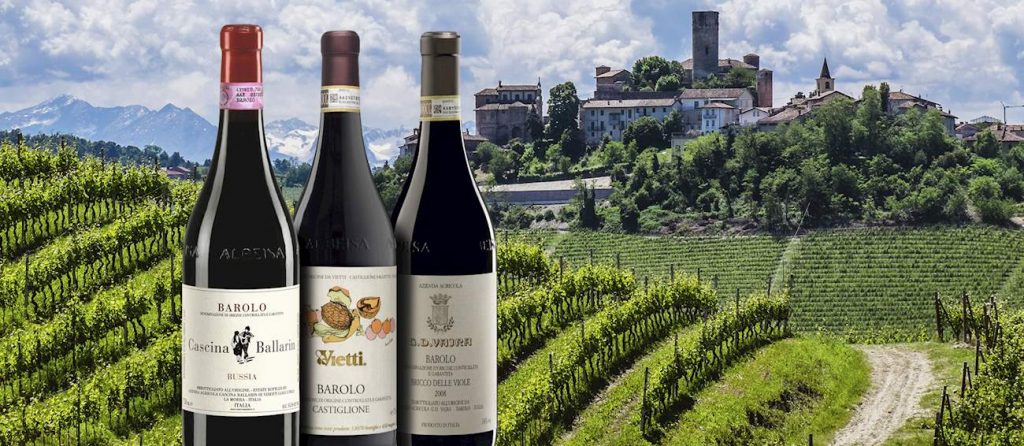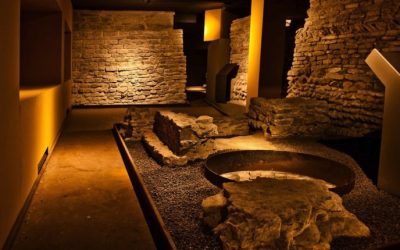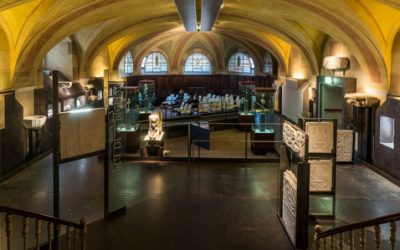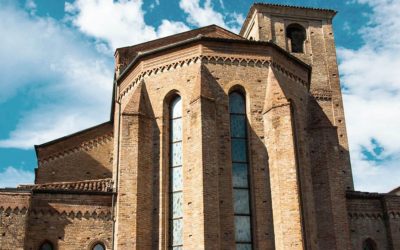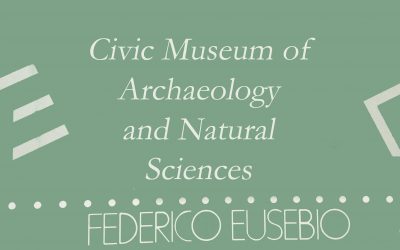Exploring Piedmont red and white Wines: An In-depth Guide
The region of Piedmont, nestled in the northwest corner of Italy, is one of the country’s premier wine-producing areas. This guide offers an overview of the region’s diverse offerings, exploring the unique characteristics of its varied red and white wines, and providing tips for visitors to the vineyards of Piedmont.
Guide to Piedmont Red and White Wines
Exploring the wines of Piedmont is akin to taking a rich and immersive journey through Italy’s culinary and cultural heritage. Piedmont, located in the northwestern corner of Italy, is renowned for its distinctive wine production, boasting some of the most celebrated and sought-after wines in the world.
Piedmont’s wine landscape is a celebration of diversity, quality, and tradition. From the revered Barolo and Barbaresco to the cheerful Asti Spumante and the accessible Barbera d’Asti, this region offers something for every palate and occasion. Whether you’re an aficionado seeking the depth of Nebbiolo or a casual drinker exploring Italian wines, Piedmont invites you on an unforgettable vinous adventure.
Langhe and Roero:
- Alta Langa DOCG
- Asti e Moscato d’Asti DOCG
- Barbaresco DOCG
- Barbera d’Alba DOC
- Barolo DOCG
- Diano d’Alba DOCG
- Dolcetto d’Alba DOC
- Dogliani DOCG
- Langhe DOC
- Nebbiolo d’Alba DOC
- Roero DOCG
- Roero Arneis DOCG
Monferrato:
- Albugnano DOC
- Barbera d’Asti DOCG
- Barbera del Monferrato Superiore DOCG
- Dolcetto d’Asti DOC
- Freisa d’Asti DOC
- Grignolino d’Asti DOC
- Malvasia di Castelnuovo Don Bosco DOC
- Monferrato DOC
- Nizza DOCG
- Ruchè di Castagnole Monferrato DOCG
- Terre Alfieri DOCG
Other Regions in Piedmont:
- Acqui DOCG
- Acqui Rosé DOCG
- Boca DOC
- Bramaterra DOC
- Colli Tortonesi DOC
- Collina Torinese DOC
- Cortese dell’Alto Monferrato DOC
- Dolcetto d’Acqui DOC
- Erbaluce di Caluso DOCG
- Fara DOC
- Freisa di Chieri DOC
- Gattinara DOCG
- Gavi DOCG
- Ghemme DOCG
- Grignolino del Monferrato Casalese DOC
- Lessona DOC
- Ovada DOCG
- Piemonte DOC
- Verduno DOC
- Vermouth di Torino IGP
Overview of Piedmont Wines
| Wine | Grape | Characteristics | Best Paired With |
|---|---|---|---|
| Barolo | Nebbiolo | Complex, cherry, truffle, rose | Red meat, game, truffles |
| Barbaresco | Nebbiolo | Elegant, red fruit, earth, spice | Pasta, risotto |
| Asti Spumante | Moscato Bianco | Sweet, fragrant, sparkling | Desserts, aperitifs |
| Barbera d’Asti | Barbera | Bright acidity, juicy fruit | Variety of dishes |
| Gavi | Cortese | Fresh, floral, mineral | Seafood, salads |
| Langhe Nebbiolo | Nebbiolo | Approachable, softer texture | Light meats, cheese |
| Dolcetto | Dolcetto | Fruit-forward, easy-drinking | Casual dishes |
| Erbaluce | Erbaluce | Dry or sweet, vibrant acidity, green apple | Various cuisines |
Located at the foot of the Alps, Piedmont’s climate, geography, and soil are ideal for viticulture, yielding wines of exceptional quality and diversity. This region is renowned for its robust reds and elegant whites, with wine production here dating back over 2000 years.
Piedmont, located in the northwest of Italy at the foot of the Alps, boasts a perfect combination of climate, geography, and soil that results in the production of diverse and exceptional quality wines. Renowned for both robust reds and elegant whites, the region’s wine production has a rich history extending over 2000 years.
Most important Red Wines of Piedmont, Italy
Exploring the world of wine tourism in Piedmont starts with understanding the regions that produce them. Piedmont, a prestigious wine region in Italy, is the birthplace of Barolo, a red wine that stands out for its elegance and complexity. Made exclusively from Nebbiolo grapes, Barolo wines offer an intoxicating blend of flavors, from ripe cherries and truffles to licorice, mingled with a distinct aroma of tar and roses. It’s a wine that truly represents the richness of Piedmont’s terroir and wine heritage, and serves as an excellent introduction to the region’s wine offerings. If you’re a wine enthusiast considering a visit to Piedmont, savoring a glass of Barolo is an experience not to be missed.
The red wines of Piedmont are diverse, ranging from light and fruity to intense and full-bodied. The region is particularly famous for its Nebbiolo-based wines, Barolo and Barbaresco, often referred to as the “King and Queen” of Italian wines. Piedmont is primarily known for its distinctive and varied red wines. These range from full-bodied, complex wines that age for decades to lighter, fruitier wines enjoyed young.
| Wine | Main Characteristics |
|---|---|
| Barolo | Made from Nebbiolo grapes, Barolo is known for its powerful tannins, high acidity, and flavors of red cherries, roses, and tar. With age, these wines develop complex tertiary notes such as leather, tobacco, and truffles. |
| Barbaresco | Also made from Nebbiolo, Barbaresco tends to be less tannic and more approachable at a young age than Barolo, with similar flavors of red fruit, flowers, and earthy notes. |
| Barbera d’Asti | Barbera d’Asti is characterized by its bright acidity, medium body, and flavors of ripe red and black fruits, often with a touch of spice. It’s versatile and food-friendly. |
| Dolcetto | Dolcetto is a light-bodied wine with soft tannins and flavors of black cherry and licorice. It’s meant to be drunk young. |
| Nebbiolo | Nebbiolo wines, aside from Barolo and Barbaresco, are usually lighter and more approachable, with characteristic flavors of red fruit, rose petals, and a touch of spice. |
Barolo
Barolo, often referred to as “the king of wines, and the wine of kings,” hails from the Piedmont region in Northwest Italy, recognized globally for its high-quality wines. Made from the Nebbiolo grape, Barolo is revered for its rich, full-bodied profile, characterized by complex flavors of cherries, truffles, and licorice. With high tannin content, Barolo is typically aged for many years to reach its prime, making it an excellent wine for cellaring. This prestigious wine is an ideal starting point for those new to wine tourism in Piedmont.
Barbaresco
Barbaresco, made from the same Nebbiolo grape as Barolo, is often considered its queen. It’s a bit more elegant and approachable, maturing quicker than Barolo. It shares similar tasting notes – red fruits, roses, and anise, but is usually a bit lighter in body.
Barbera d’Asti Superiore
This wine is a higher-quality version of Barbera d’Asti. It’s known for its bright acidity, full body, and flavors of dark berries and spice. The “Superiore” designation means it has been aged longer and has a slightly higher alcohol content.
Barbera D’Asti
Barbera d’Asti is a versatile, everyday red wine known for its deep ruby color, low tannins, and high acidity. It offers flavors of ripe black cherry, blackberry, and dried herbs.
Barbera d’Alba
Barbera d’Alba, emerging from the heart of Italy’s prestigious Piedmont region, has carved a niche for itself alongside the famous Nebbiolo-based Barolo and Barbaresco wines. Produced from the Barbera grape, this wine is celebrated for its deep ruby-red hue, vibrant red and black fruit aromas, and notably high acidity. These characteristics not only make it incredibly food-friendly but also allow it to offer a harmonious balance between youthful vibrancy and the potential for nuanced aging. With some versions embracing the fruity purity through stainless steel aging, and others acquiring depth from oak barrels, Barbera d’Alba stands as a testament to Piedmont’s diverse vinicultural prowess.
Dolcetto
Dolcetto is a lighter, fruit-forward wine with moderate acidity and almond and licorice flavors. It’s an excellent choice for those seeking an easy-drinking wine to pair with a wide variety of foods.
Freisa
Freisa is a native Piedmontese grape that produces wines with a fruity bouquet, strong tannins, and high acidity. Its flavor profile includes red cherries and raspberries, sometimes with a slightly bitter finish.
Grignolino
Grignolino is a unique wine with light color, strong tannins, and high acidity. It’s known for its aromatic profile, offering notes of dried flowers and red fruits, and is typically enjoyed young.
Nebbiolo
part from Barolo and Barbaresco, Nebbiolo is used to produce less tannic and more approachable wines, which can be consumed at a younger age. These wines still carry Nebbiolo’s trademark high acidity and tannin, with flavors of cherries, raspberries, and rose petals.
Nizza
Nizza is a high-quality subcategory of Barbera d’Asti, named after the town of Nizza Monferrato. It is known for its full body, high acidity, and robust flavors of red and black fruits, accompanied by spicy notes when aged in oak.
Pinot Nero
Pinot Nero (or Pinot Noir) is not native to Piedmont, but some excellent versions are produced in the region. These wines typically show a lighter body with flavors of red fruits, earth, and spice.
Ruchè
Ruchè is a unique and rare red wine with a highly aromatic profile. It’s known for its bold and spicy flavor with notes of ripe berries and flowers.
Sirah
Also known as Syrah or Shiraz in other regions, Sirah in Piedmont typically produces full-bodied wines with a dark fruit profile and peppery spice notes.
Most important Piedmont’s White Wines
This section provides an in-depth look at each of the key red wines produced in Piedmont. From the rich, complex Barolo to the lighter-bodied Dolcetto and Grignolino, each wine’s unique qualities, flavor profiles, and ideal food pairings are discussed in detail.
White Wines of Piedmont
| Wine | Main Characteristics |
|---|---|
| Arneis | Arneis is a full-bodied white wine with a delicate, aromatic profile, often featuring notes of pears, apricots, and flowers. |
| Cortese | Cortese, the grape behind Gavi, offers bright acidity, medium body, and flavors of green apple, lime, and almond, often with a mineral note. |
| Erbaluce | Erbaluce wines are noted for their high acidity, medium body, and flavors of citrus and green apple, with a characteristic bitter almond finish. |
| Moscato d’Asti | Moscato d’Asti is a lightly sparkling, sweet wine with intense aromas of peaches, orange blossom, and grapefruit. |
| Nascetta | Nascetta produces complex, full-bodied white wines with high acidity, typically having pronounced mineral notes with aromas of citrus fruits and anise. |
Piedmont is also home to a variety of unique and flavorful white wines. These range from the popular Moscato d’Asti, a sweet, lightly sparkling wine, to the full-bodied and aromatic Roero Arneis. While Piedmont is primarily known for its red wines, the region also produces a range of fascinating white wines that offer a different expression of its terroir. Here are some of the key white wines from Piedmont:
Arneis
Arneis, primarily grown in the Roero area, produces full-bodied white wines with a delicate, aromatic profile, often featuring notes of pears, apricots, and flowers. The wines are typically dry, with moderate to high acidity and a slight bitterness in the finish.
Cortese
Cortese is the grape behind Gavi, one of Piedmont’s most famous white wines. It’s known for its bright acidity, medium body, and flavors of green apple, lime, and almond. The best examples often have a mineral note, reminiscent of wet stones.
Erbaluce
Erbaluce is a local white grape variety that produces dry, sparkling, and sweet passito wines. The dry versions are noted for their high acidity, medium body, and flavors of citrus and green apple, with a characteristic bitter almond finish.
Favorita
Favorita is a light, fresh, and fruity white wine that’s similar to Vermentino. It offers low acidity and flavors of citrus fruits and melon, making it an ideal choice for aperitifs or light seafood dishes.
Moscato d’Asti
Moscato d’Asti is a lightly sparkling (frizzante) sweet wine with low alcohol content, high acidity, and intense aromas of peaches, orange blossom, and grapefruit. It’s a perfect dessert or brunch wine, often enjoyed with fruit or pastries.
Moscato Bianco
Moscato Bianco is used to make a range of wines from dry to sweet, still to sparkling. These wines are usually characterized by intense floral and fruity aromas, low to medium acidity, and a typically sweet finish.
Nascetta
Nascetta is an indigenous white grape variety producing complex, full-bodied white wines with high acidity. Typically, these wines have pronounced mineral notes with aromas of citrus fruits and anise, and they can age well for several years.
Timorasso
Timorasso is a historic grape variety that was almost extinct but is now enjoying a renaissance. The wines are full-bodied and structured, with high acidity, pronounced minerality, and flavors of ripe pears, apricots, and spices. With aging, Timorasso wines can develop complex honey and nutty notes.
Overview of Vineyard Tours in Piedmont
Piedmont, or Piemonte as it is known in Italian, is a paradise for wine lovers. With its verdant rolling hills, rich history, and world-renowned wines, the region offers a plethora of vineyard tours that cater to a variety of tastes and preferences. Here is a broad overview of what you might expect when touring the vineyards of Piedmont:
Types of Tours
Vineyard tours in Piedmont come in many forms. There are self-guided tours for those who prefer to explore at their own pace, guided tours for those interested in an expert’s perspective, and even helicopter tours for those who want a bird’s eye view of the sprawling vineyards.
Experiences Offered
Beyond just wine tasting, many vineyards in Piedmont offer a wide range of experiences. These might include vineyard walks, where visitors can get up close and personal with the grapes; winemaking demonstrations, offering an insight into the process from grape to bottle; and food pairings, where wines are matched with local Piedmontese cuisine.
Duration and Cost
The duration and cost of vineyard tours in Piedmont can vary greatly. Some tours might last an hour or two and involve visiting a single vineyard, while others could be full-day or even multi-day tours that take in several vineyards. Prices can range from relatively inexpensive to premium, depending on the length of the tour, the reputation of the vineyard, and the experiences included.
What to Expect
Visitors to Piedmont vineyards can expect breathtaking views of rolling vine-covered hills, charming wineries ranging from historic to state-of-the-art, and, of course, an opportunity to taste some of the region’s renowned wines. Some vineyards may also have their own cellars, allowing visitors to see where the wine is aged, while others might have on-site shops where visitors can purchase wines to take home.
Key Vineyards
While there are many vineyards in Piedmont, some are particularly noteworthy either for their history, their wines, or the unique experiences they offer. These include Marchesi di Barolo, Pio Cesare, Gaja, and Ceretto, among others. These vineyards produce some of the region’s most famous wines and offer comprehensive tour experiences.
Planning Your Visit
When planning a vineyard tour in Piedmont, it’s essential to consider the time of year. Harvest season, typically from late September to October, can be an exciting time to visit, though it’s also the busiest. Spring and early summer offer lovely weather and fewer crowds. Additionally, it’s advisable to book tours in advance, particularly for the more popular vineyards. Lastly, consider transportation – many vineyards are located in rural areas that can be challenging to reach without a car. Some visitors might find it helpful to join an organized tour, which generally includes transportation.
Exploring the vineyards of Piedmont is an experience like no other, offering not just the opportunity to taste some exceptional wines, but also to immerse oneself in the region’s rich culture, history, and stunning landscapes.
Key Vineyards to Visit
When it comes to vineyard visits in Piedmont, there are several key vineyards that every wine enthusiast should aim to explore. These vineyards not only offer a rich selection of exceptional wines but also provide a deep insight into the region’s winemaking traditions, history, and culture.
Marchesi di Barolo
Marchesi di Barolo is one of the most prestigious wine estates in the region. Located in the village of Barolo, it’s known as the birthplace of Barolo wine, often referred to as “the king of wines and the wine of kings”. Marchesi di Barolo offers visitors an immersive experience, from exploring the historic cellars to tasting their exceptional Barolo wines. The estate also hosts a range of wine-related events throughout the year, making it a must-visit destination for wine lovers.
Gaja
Gaja, located in the town of Barbaresco, is one of the most iconic wine names in Piedmont. The winery has played a significant role in revolutionizing Italian wine production and has contributed to elevating the status of Barbaresco on the global wine stage. At Gaja, visitors can sample a wide array of wines, including their acclaimed Barbaresco, and discover the family’s storied history and innovative winemaking methods. It’s an enlightening experience, especially for those interested in how traditional and modern techniques can converge to produce magnificent wines.
These vineyards are just a few examples of the remarkable wineries found in Piedmont. Each offers its own unique charm and an array of delicious wines, making them essential stops for anyone touring the region. Their enchanting landscapes, historic cellars, and, of course, their world-class wines, promise an unforgettable experience for every visitor.
Vietti
The Vietti winery, located in the small medieval village of Castiglione Falletto, is an iconic destination for any Piedmont wine tour. With a history of winemaking dating back to the 19th century, Vietti has a reputation for producing wines that express character, structure, and longevity. Some of the wines produced here are among the most representative of the region, such as their exceptional Barolo and Rocche di Castiglione. The winery offers guided tours that provide an inside look at the winemaking process, from the vineyards to the cellars, as well as wine tastings paired with local foods.
By visiting these vineyards, wine lovers can gain a true appreciation for the meticulous process of crafting Piedmont wines and the dedication of the winemakers to their land and tradition. The opportunity to taste some of the most acclaimed wines in their place of origin is an experience not to be missed.
Pio Cesare
Pio Cesare is another iconic name in the Piedmont wine world. Located in the town of Alba, the winery has been producing classic Piedmontese wines since 1881. With an impressive range of wines including Barolo, Barbaresco, Barbera, and Moscato, Pio Cesare offers a comprehensive glimpse into Piedmont’s rich wine tradition. A visit to the Pio Cesare winery involves a tour of the historic cellars, a walk through the vineyards, and a wine tasting that includes some of their most renowned labels.
This family-owned winery has been producing classic Piedmontese wines for over 135 years, combining traditional and modern winemaking methods. The vineyard’s expansive wine cellars, dating back to the late 19th century, are built within the ancient city walls of Alba. A visit to Pio Cesare offers a unique opportunity to taste world-renowned wines like Barolo and Barbaresco, and to delve into the winery’s intriguing history.
Each of these vineyards, with their rich heritage and excellent wines, provides a unique window into the world of Piedmontese winemaking. Whether you’re an avid oenophile or a casual wine enthusiast, visiting these vineyards promises to be an enlightening and enjoyable experience.
Ceretto
Located in the heart of the Langhe hills, Ceretto is a prominent winery that’s worth visiting not just for their exquisite wines but also for their commitment to sustainable and organic farming practices. Offering panoramic views of the vine-laden landscape, the estate produces highly rated Barolo and Barbaresco wines, as well as a selection of other red and white wines. Visitors to Ceretto can tour their spectacular facilities, taste a variety of their wines, and learn about the winery’s dedication to preserving the environment.
How to Plan Your Visit in Piedmont
When planning a visit to Piedmont’s vineyards, timing and reservations are key factors. If you wish to witness the vibrant atmosphere of grape harvesting, plan your visit for September or October. For lush vineyard landscapes, late spring is ideal. Many vineyards in Piedmont require advanced reservations for tours and tastings, so ensure to check the respective websites well ahead of your trip.
Practical considerations like attire and transportation also play a significant role in your trip planning. Wear comfortable clothing and shoes, as vineyard visits often involve substantial walking. Given that the Piedmont region is spread out, renting a car can provide flexibility. However, with wine tasting being a major activity, consider hiring a local driver or joining an organized wine tour for a safe and hassle-free experience. Ensure to allocate ample time for each visit, usually around 1.5 to 2 hours, to fully appreciate the experience without feeling rushed. Wine tours in Italy.
Wine Tasting in Piedmont
Piedmont is renowned for its wine tasting experiences, which offer visitors the chance to sample a wide variety of local wines in unique settings.
An Introduction to Wine Tasting
Wine tasting is a sensory experience that involves more than just your taste buds. It’s a way to appreciate and understand the complexities and nuances of different wines. Here’s a simple introduction to help you navigate your way through a wine tasting session.
Firstly, it’s essential to understand the four primary steps of wine tasting: look, swirl, smell, and taste.
- Look: Pour a small amount of wine into your glass and observe its color and clarity. The wine’s appearance can give you clues about its age and concentration. Generally, white wines gain color as they age, while red wines lose color.
- Swirl: Gently swirl your glass to aerate the wine. This helps to unlock its aromas and gives you a hint of what to expect in terms of flavor.
- Smell: Take a moment to inhale the aromas of the wine. This step is vital, as a significant portion of taste is actually smell. Wines can have a vast array of aromas, from fruits and flowers to spices, earthy tones, and many others.
- Taste: Finally, take a small sip and let the wine spread across your palate. Try to identify the various flavors, the sweetness or dryness, the acidity, tannin levels, and the body (or weight) of the wine. Also, note the finish – the taste that lingers after swallowing.
Remember that wine tasting is subjective, and what matters most is your personal enjoyment. Don’t worry if you can’t identify all the flavors and aromas that experienced tasters might describe. The more wines you taste, the more refined your palate will become, so take your time, savor each sip, and most importantly, enjoy the experience!
